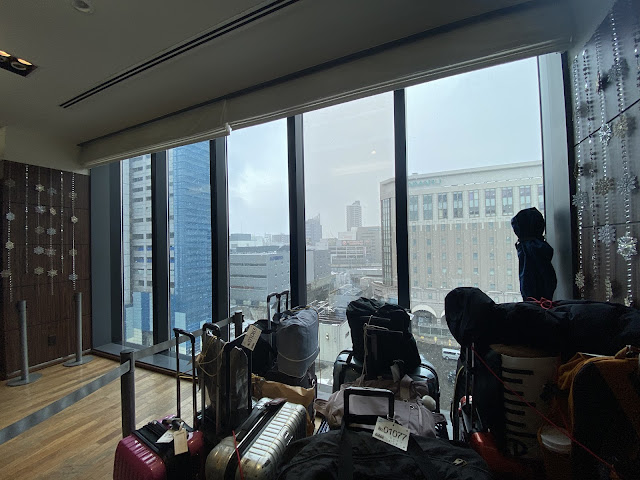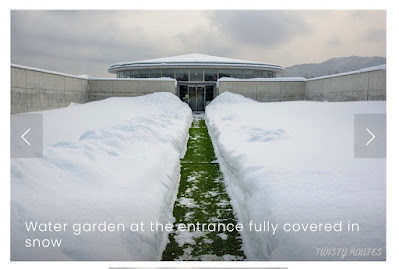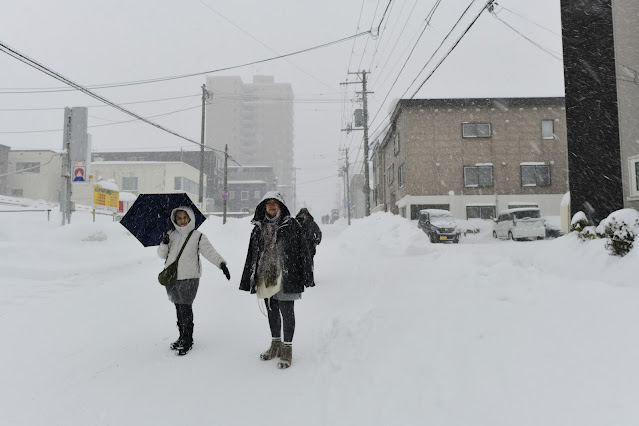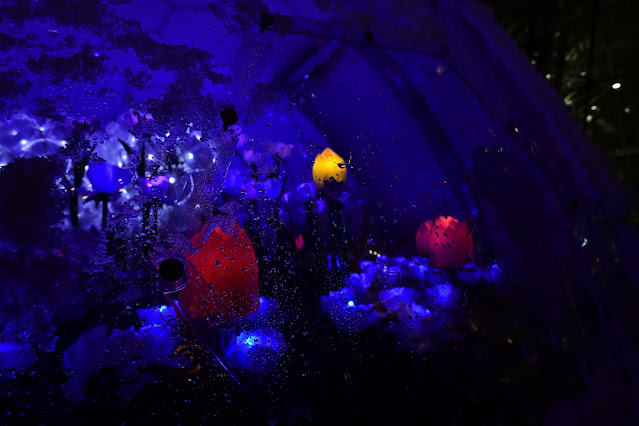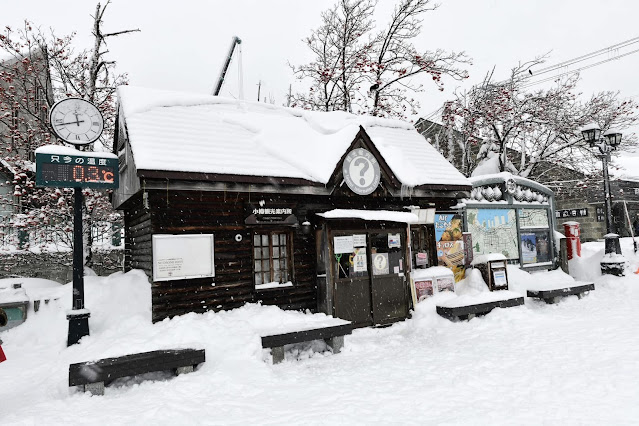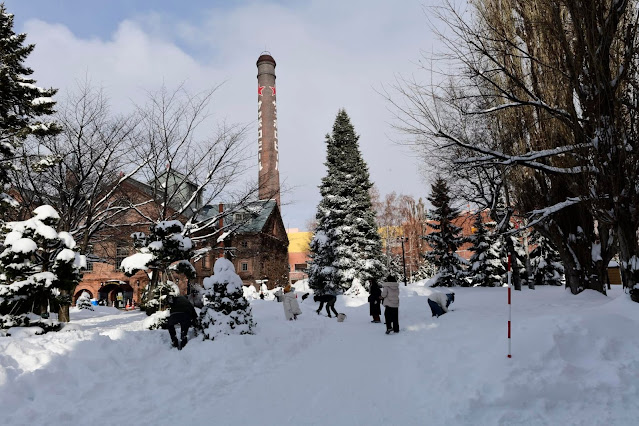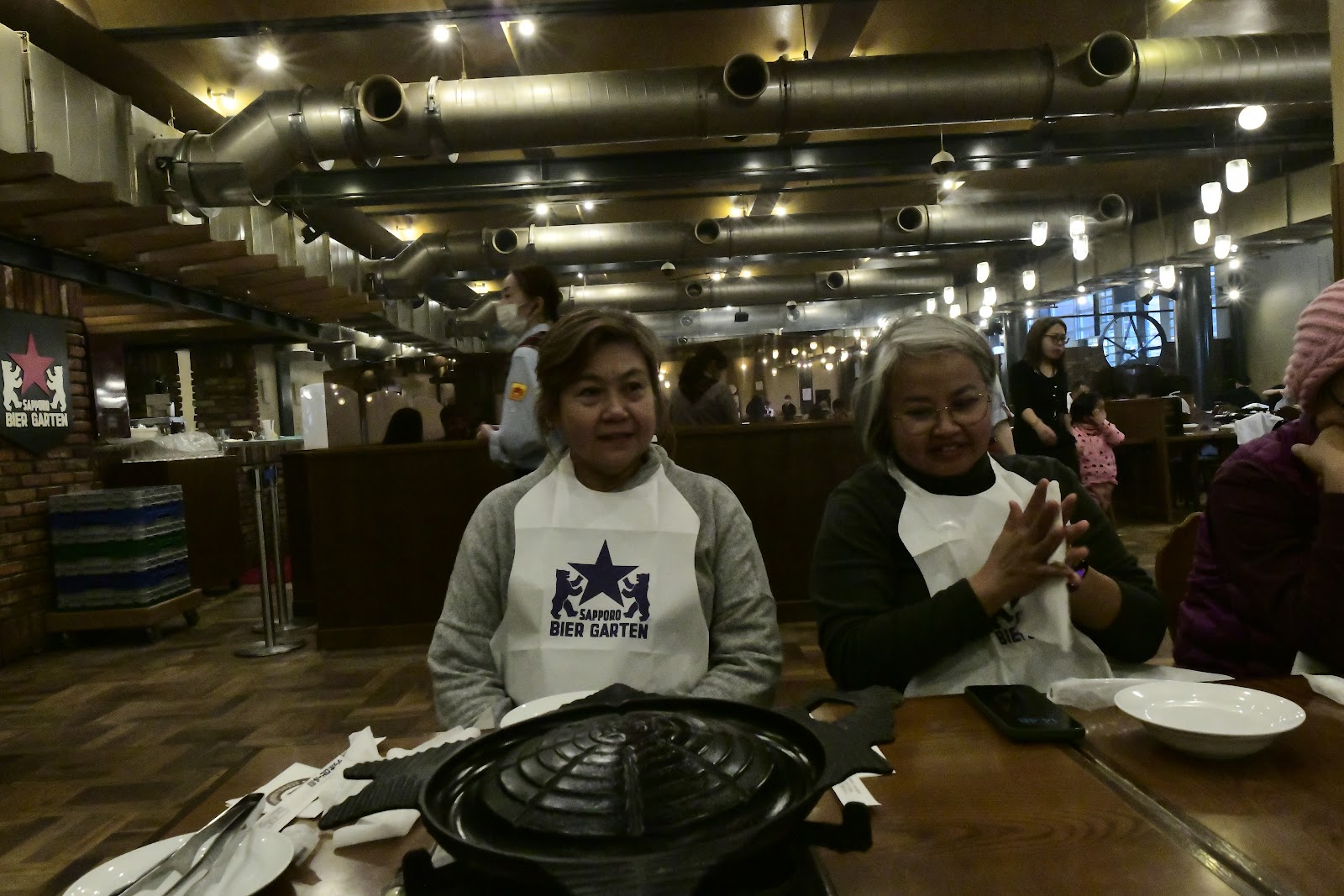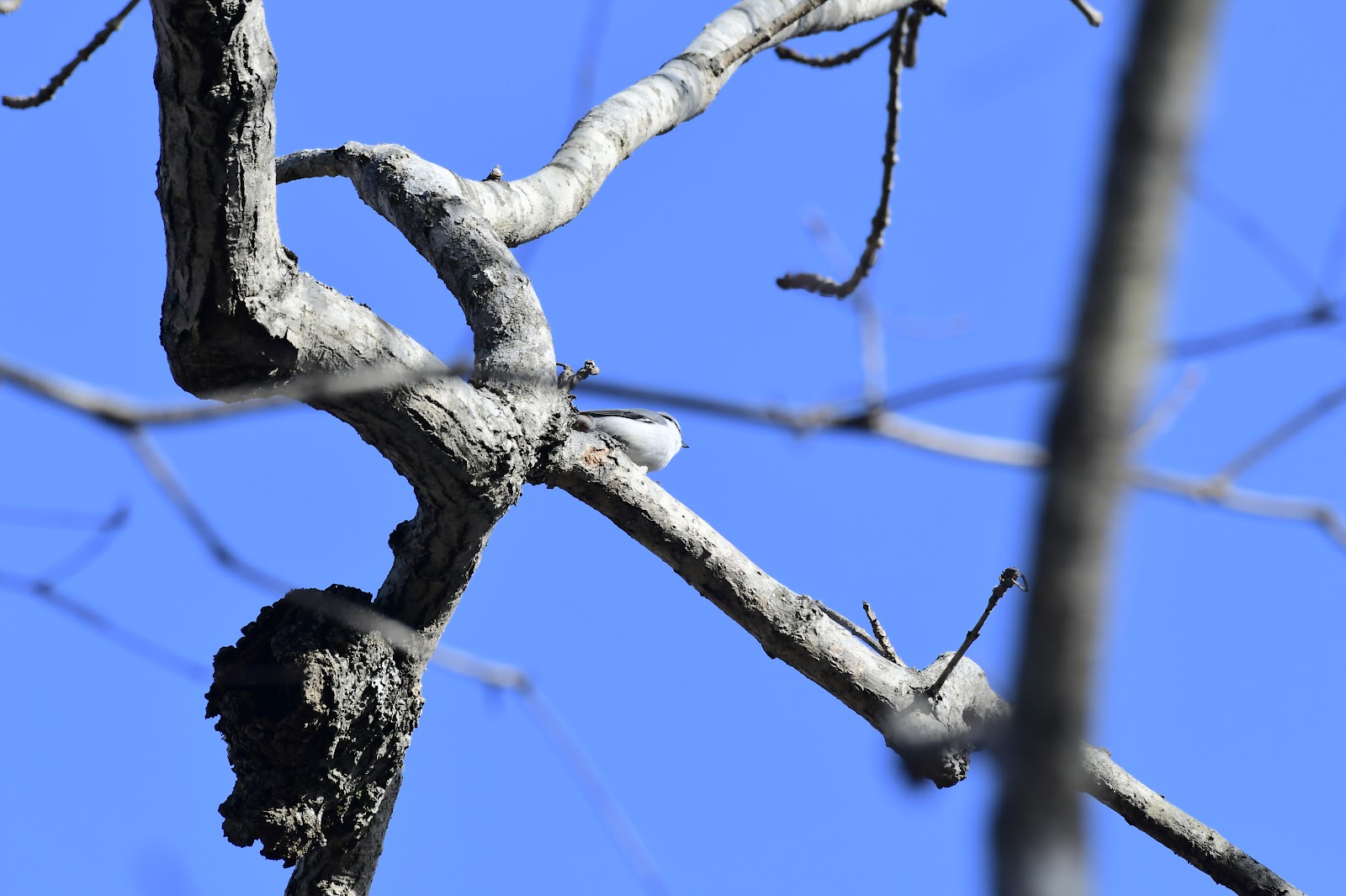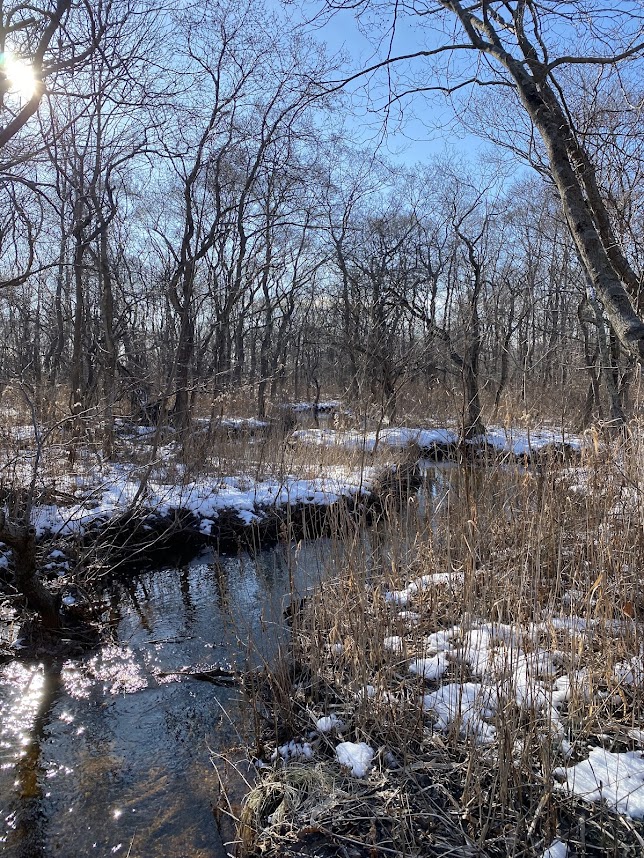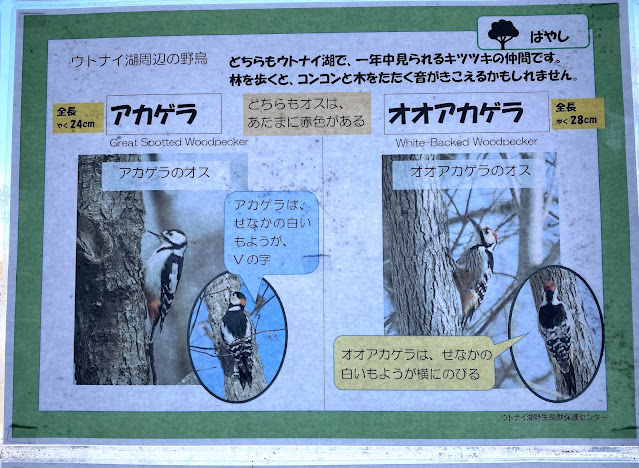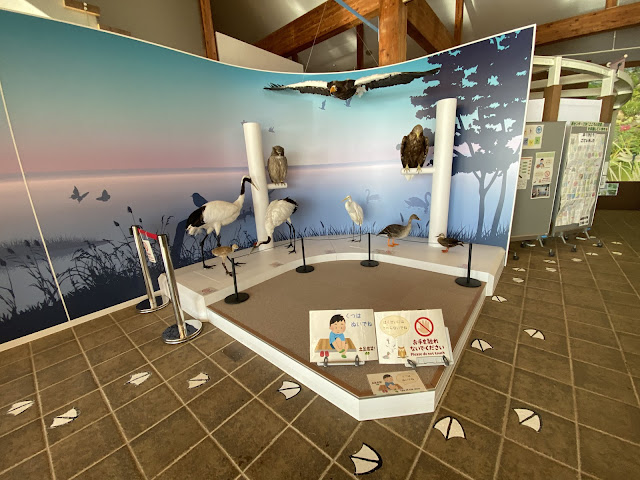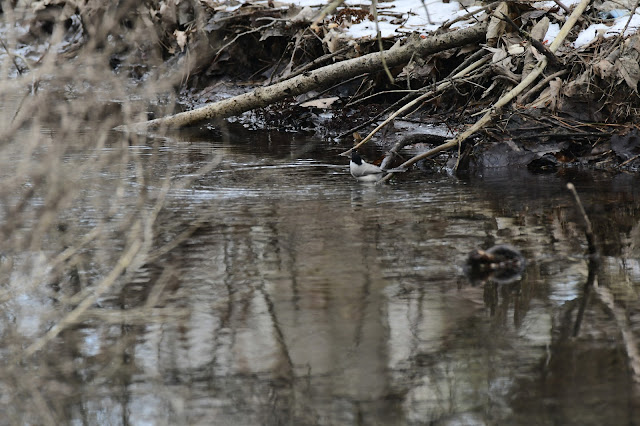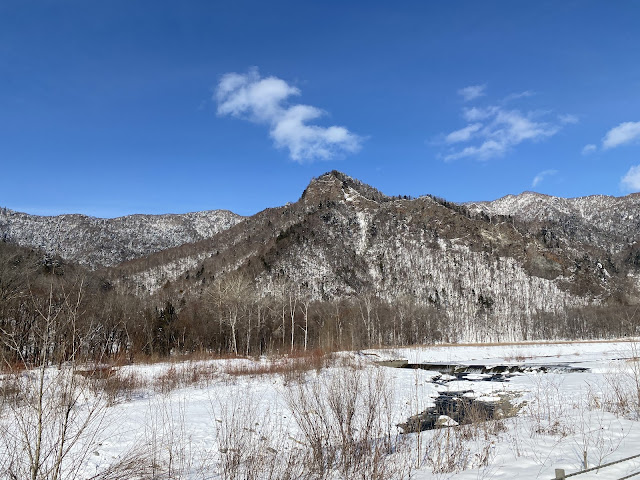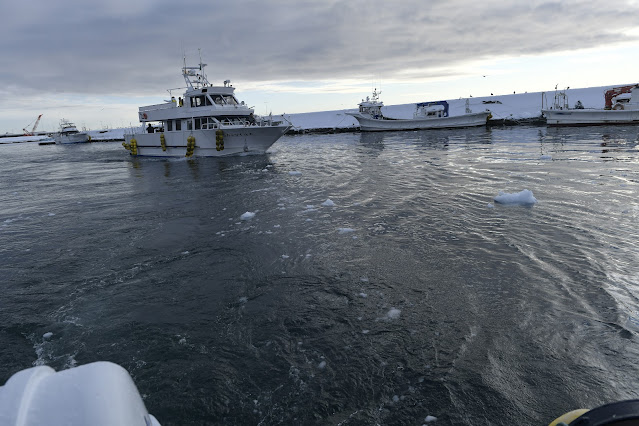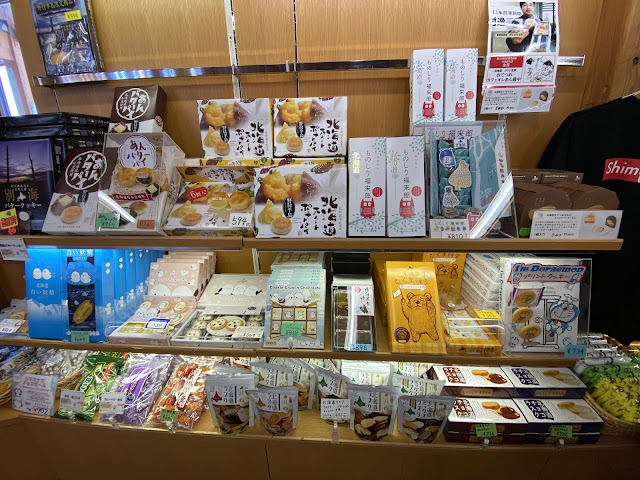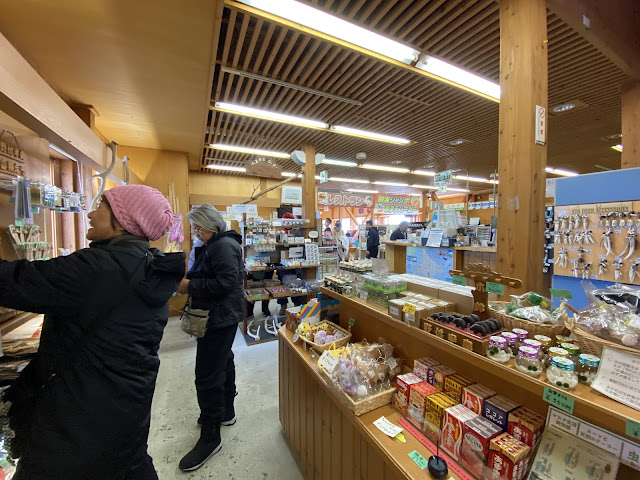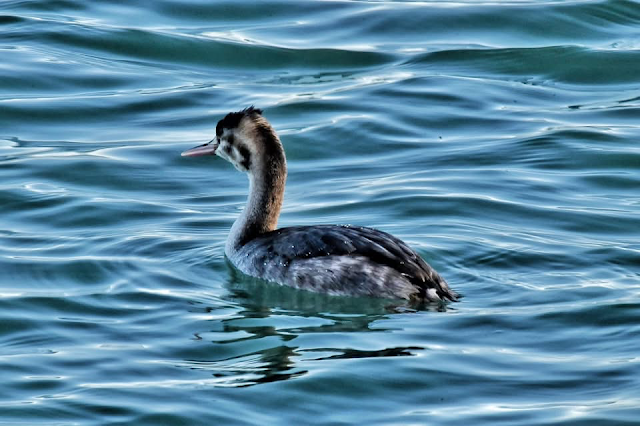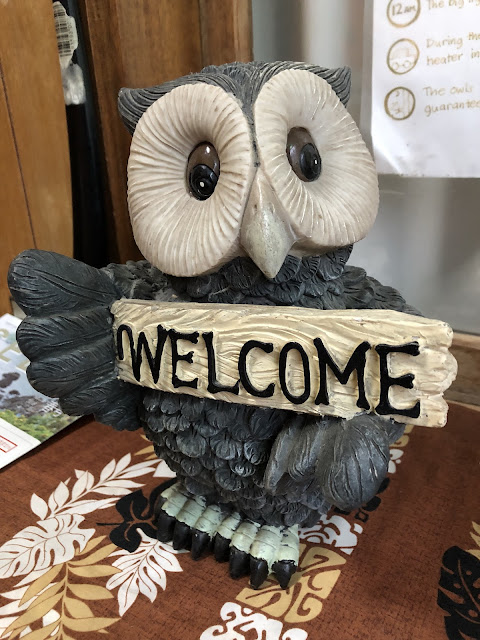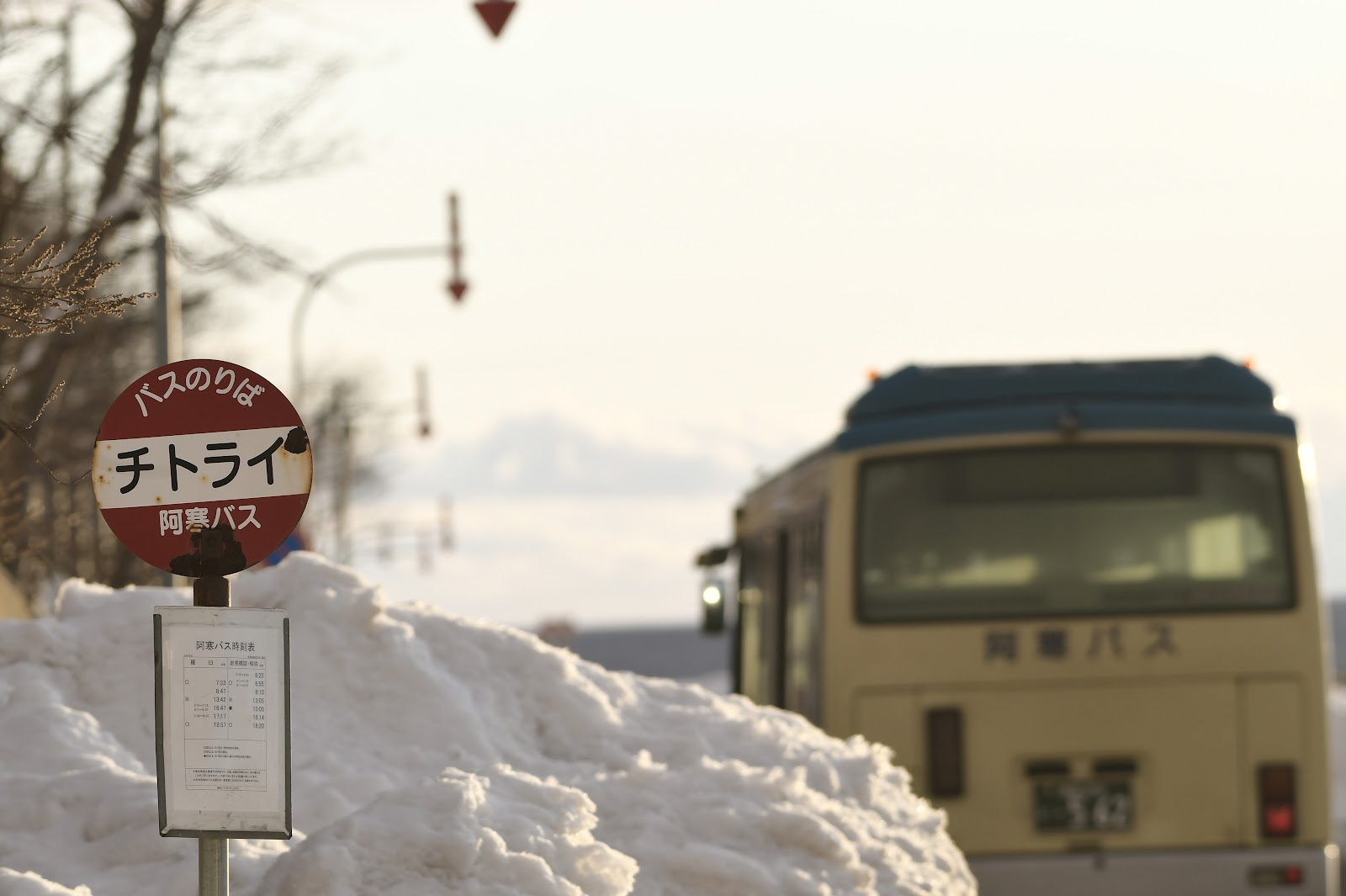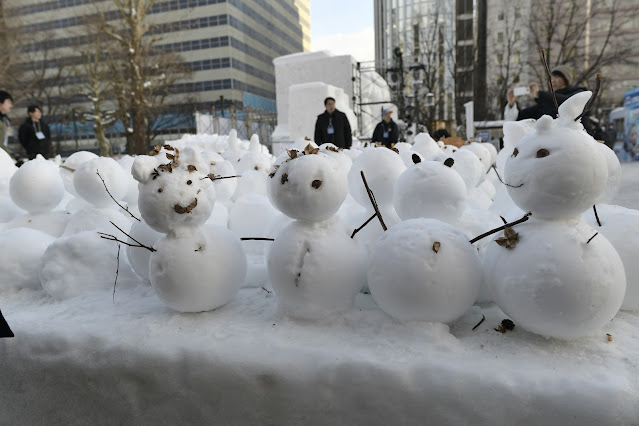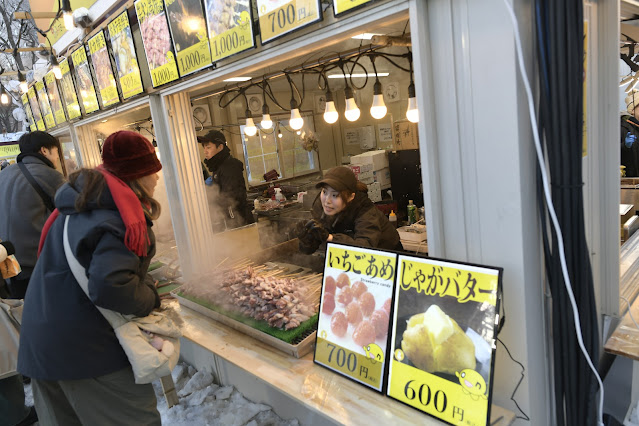ช่วงเทศกาลหิมะซับโปโร เที่ยวไหนดี
“ What to do during the Sapporo snow festival”
28-8 กุมภาพันธ์ 2015 ดีเดย์ จองตั๋วเครื่องบิน และโรงแรมได้เรียบร้อยครั้งนี้ได้ไปแน่นอนข้อมูลการใช้งาน
- จุดจำหน่ายพาสหรือแลกพาสรถไฟ (Train) ของบริษัทJR ทั้งหมดในภูมิภาคฮอกไกโด และสามารถนั่ง limited express trains และ express trains ได้ฟรีอีกด้วย
- รถบัส (Bus) ของบริษัท JR ทุกสายในภูมิภาคฮอกไกโด **ยกเว้น Twinkle Bus และเส้นทางจาก Sapporo ไปยัง Asahikawa, Monbetsu, Obihiro, Kiroro และ Erimo
- สามารถสำรองที่นั่งได้ฟรี (จองได้ที่เคาน์เตอร์ JR หรือ ตู้อัตโนมัติที่สถานี JR)
- ตั๋วไม่ครอบคลุมค่าใช้จ่ายตู้นอนของรถไฟกลางคืน หากคุณเดินทางด้วยรถไฟกลางคืนจะต้องจ่ายค่าตู้นอน และที่นั่งทั้งหมด
- ตั๋วแบบ 5 , 7 และ 10 วัน ต้องใช้งานแบบต่อเนื่อง
JR Hokkaido Rail Pass จะจำหน่ายเฉพาะนักท่องเที่ยวต่างชาติเท่านั้น
Click เพื่อเช็คสถานที่แลกเปลี่ยนเวาเชอร์
เงื่อนไขการคืนสินค้า
ออกตั๋วไม่เกิน 90 วัน – ค่าธรรมเนียม 20% จากราคาตั๋ว
ออกตั๋วเกิน 90 วัน – ไม่รับคืน
เราออกเดินทางจากสุวรรณภูมิโดย การบินไทยตามเวลา เครื่องออก 23.55 แต่ เสียเวลาไปประมาณ 10 นาที ได้ยินเสียงกับตันประกาศว่ามีการขัดข้องทางเทคนิคเล็กน้อย เรานั่งอยู่แถวหน้าเห็นช่างกำลังมะรุมมะตุ้มอยู่กับเครื่องยนต์โรสลอยด์ ก็ทำให้ใจเต้นแรง ตอนเครื่องขึ้นก็แอบลุ้นนิดหนึ่ง แต่ในที่สุดก็ราบรื่นตบอดทาง ถึง Sapporo new Chitose 8.20 น ใช้เวลา 6 ชั่วโมง 25 นาที
เช็คอิน เข้าประเทศเรียบร้อย มีขั้นตอนเพิ่มจากที่เคยศึกษามาเล็กน้อย จากที่เราได้กรอกใบ ตม.ออนไลน์ มาก่อนแล้ว เราจะได้รับ QR Code มาแสดงให้ ตม.ดูแล้ว ตอนรับกระเป๋าเราก็ต้อง ดีแคลร์ด้วย QR code ที่ตู้อัตโนมัตอีกครั้ง จะมีเจ้าหน้าที่คอยถามว่าทำหรือยังๆ หลายคนเลย
ได้กระเป๋าเรียบร้อย เดินไปสถานรถไฟ เพื่อขึ้นบัตร JR Pass และ
หาซื้อ ตั๋ว welcome suica card ( ประมาณ 1000¥ ต่อไปก็เติมเงินเรื่อยๆ ใช้เงินจนหมดคืนเงินไม่ได้)

ที่เคาน์เตอรเซอรวิสของJR มีนักท่องเที่ยวเข้าคิวยาวเหยียดเพราะส่วนใหญ่ก็ใช้บริการ ตั๋ว JR pass กันแทบทุกคน ใช้เวลารอเกือบชั่วโมง ได้ตั๋วพร้อมรีเซิฟที่นั่งเรียบร้อย มีเวลา 20 นาที ตามขบวนที่ระบุในตั๋วที่รีเสริฟที่นั่งไว้ รีบจ้ำอ้าวกันไปขึ้นรถไฟที่จอดรอ อยู่แล้ว เราออกสนามบินประมาณ 10โมง40 นาที เดินทางไป โรงแรม Hotel Gracery Sapporo โดยรถไฟRapid Airport ใช้เวลา 38 นาที ใช้ตั๋ว JR pass (ปกติ ค่ารถ 1990 ¥ และเดินไป อีก 400 เมตร ถ้าใช้ shuttle bus ใช้เวลา 1ชั่วโมง 15 นาที ไปยังสถานี ซัปโปโร
ออกจากสถานีรถไฟ ใช้ กูเกิลแมปหาทางไปโรงแรมทางใต้ดินเดินวนจนเหนื่อยสุดท้ายยอมแพ้ใช้บันไดเลื่อนออกมาที่ถนน เห็นโรงแรมอยู่ข้างหน้าอีกฟากถนนนี่เอง ลากกระเป๋าฝ่าน้ำแฉะๆจากหิมะที่เพิ่งละลายข้ามถนนและเดินไป อีก 160 เมตรไปยังโรงแรม ยังไม่ถึงเวลาเช็คอินเรา ฝากกระเป๋าไว้ที่ลอปบี้โรงแรม ซึ่งอยู่ที่ชั้น7 ของโรงแรม ( โรงแรมในตัวเมืองที่ญี่ปุ่น ลอปบี้มักจะไม่ได้อยู่ที่ชั้น1การเช็คอิน เช็คเอาท์ก็ใช้ตู้อัตโนมัติ โดยใช้ พาสปอรต์ของเรา )
ออกจากสถานีรถไฟ ใช้ กูเกิลแมปหาทางไปโรงแรมทางใต้ดินเดินวนจนเหนื่อยสุดท้ายยอมแพ้ใช้บันไดเลื่อนออกมาที่ถนน เห็นโรงแรมอยู่ข้างหน้าอีกฟากถนนนี่เอง ลากกระเป๋าฝ่าน้ำแฉะๆจากหิมะที่เพิ่งละลายข้ามถนนและเดินไป อีก 160 เมตรไปยังโรงแรม ยังไม่ถึงเวลาเช็คอินเรา ฝากกระเป๋าไว้ที่ลอปบี้โรงแรม ซึ่งอยู่ที่ชั้น7 ของโรงแรม ( โรงแรมในตัวเมืองที่ญี่ปุ่น ลอปบี้มักจะไม่ได้อยู่ที่ชั้น1การเช็คอิน เช็คเอาท์ก็ใช้ตู้อัตโนมัติ โดยใช้ พาสปอรต์ของเรา )
 เราไปที่ป้ายหมายเลข 2 (ตามโพยที่อ่านรีวิวมา) ซึ่งจริงๆที่ป้ายนี้ก็มีรถหยุด 2-3 สาย ลองกดดูใน กูเกิลแมป บอกว่าไป สาย 106 รถคนแรกมาไม่ใช่106 แต่ทุกคนขึ้นไปกันหมด ลองถามเด็กหนุ่มญี่ปุ่นว่าจะไปเนินพระพุทธไปคันนี้ได้ไหม เด็กตอบด้วยความมั่นใจไปได้ๆ ค่าโดยสาร 380 เยน ใช้บัตร Suica แตะได้เหมือนเดิม ใช้เวลาประมาณ 25 นาที รถมาสุดสายไม่ใช่ ไม่เห็นเนินอะไรสักอย่าง ถามคนขับบอกว่า ต้องไป สาย 106 อ้าว ขณะลงรถเห็น 106 วิ่งมาจอดข้างหน้า2 คัน ริบวิ่งกันไป คันแรก ไม่ทัน ขึ้นคันที่2 นั่งสบายใจได้ไม่นาน ร็สึกผิดปกติกูเกิลแมบเดินถอยหลัง ต้องรีบลงและเดินข้ามฟากไปรอที่ป้ายอีกฝั่ง หิมะก็เริ่มตกหนัก ทุลักทุเลสุดๆรอรถประมาณครึ่งชั่วโมงจึงได้ขึ้นรถ
เราไปที่ป้ายหมายเลข 2 (ตามโพยที่อ่านรีวิวมา) ซึ่งจริงๆที่ป้ายนี้ก็มีรถหยุด 2-3 สาย ลองกดดูใน กูเกิลแมป บอกว่าไป สาย 106 รถคนแรกมาไม่ใช่106 แต่ทุกคนขึ้นไปกันหมด ลองถามเด็กหนุ่มญี่ปุ่นว่าจะไปเนินพระพุทธไปคันนี้ได้ไหม เด็กตอบด้วยความมั่นใจไปได้ๆ ค่าโดยสาร 380 เยน ใช้บัตร Suica แตะได้เหมือนเดิม ใช้เวลาประมาณ 25 นาที รถมาสุดสายไม่ใช่ ไม่เห็นเนินอะไรสักอย่าง ถามคนขับบอกว่า ต้องไป สาย 106 อ้าว ขณะลงรถเห็น 106 วิ่งมาจอดข้างหน้า2 คัน ริบวิ่งกันไป คันแรก ไม่ทัน ขึ้นคันที่2 นั่งสบายใจได้ไม่นาน ร็สึกผิดปกติกูเกิลแมบเดินถอยหลัง ต้องรีบลงและเดินข้ามฟากไปรอที่ป้ายอีกฝั่ง หิมะก็เริ่มตกหนัก ทุลักทุเลสุดๆรอรถประมาณครึ่งชั่วโมงจึงได้ขึ้นรถไปชมเนินเขาพระพุทธเจ้า
Hill of the Buddha
The Hill of the Buddha (頭大仏) is a Buddhist shrine at Makomanai Takino Cemetery in the outskirts of Sapporo on Japan’s northern island of Hokkaido.
Designed by architect Tadao Ando, the stunning shrine opened in December 2015.
The sculpted stone Buddha statue called Atama Daibutsu, is encircled by a rotunda situated on a gently sloping artificial hill within the land belonging to the cemetery. It is 13.5-metre tall and weighs 1500 tonnes. When approaching it from afar, the lone head of the Buddha peeking from within the rotunda conveys a solemn, serene impression of the Buddha.
The Hill of the Buddha (頭大仏) is a Buddhist shrine at Makomanai Takino Cemetery in the outskirts of Sapporo on Japan’s northern island of Hokkaido.
Designed by architect Tadao Ando, the stunning shrine opened in December 2015.
Getting There
From Sapporo Subway station (N06) take the Namboku line bound for Makomanai and get off at the terminal at Makomanai (N16)
Outside Makomanai station take the Chuo bus no. 106 or Chuo bus no. 108 to get to Takino Cemetery from where it is a short walk to the Buddha. The bus ride costs 380 Yen
Opening Hours
April-October 9: 00-16: 00
November-March 10: 00-15: 00
Open all year round
Admission Fees A 300-yen donation is requested per person.
เราจับรถเมล์เที่ยวสุดท้ายกลับซับโปโร
| เข้าเช็คอินที่พัก และตั้งใจจะไปทานอาหารค่ำที่ คลองโอตารุ |
คลองโอตารุ (Otaru Canal) – โอตารุ
ค่าเข้าชม : ไม่มี
เวลาเปิด-ปิด : ตลอด 24 ชม.
วิธีเดินทาง : นั่งรถไฟ Japan Railways (JR) จากสถานี Sapporo (Jr) ลงสถานี Minami Otaru ประมาณ 1 ชม.
ภาพบรรยากาศคลองโอตารุระหว่างเมีเทศกาลหิมะ สักปีหนึ่งในอดีตที่เราอยากเจอ

Otaru city is a city which had once flourished with port and railway. It is also one of the most popular sightseeing spot in Hokkaido, even now you can still find the marks of the past glory time. The construction of Otaru Canal which is also the symbol of Otaru is started from the year 1914, and completed in 9 years later in the year 1923. The total length of the canal is 1,140 m, the stone made warehouse along the canal is remained as it was during the old time, and it is also reused in restaurant and others. In evening, when the gas lamps are turned on, the stone warehouse are lighted up and the whole atmosphere is totally different from daytime.
ไม่ว่าจะฤดูไหน หนึ่งในพิกัดห้ามพลาดเมื่อมา ทัวร์ฮอกไกโด ก็คือ คลองโอตารุ สถานที่ชิลๆ บรรยากาศริมคลองสายเล็กๆ ที่มีทางเดินทอดยาวและเต็มไปด้วยร้านค้ามากมาย ในช่วงฤดูหนาวที่นี่จะปกคลุมไปด้วยหิมะ สวยงามเกินบรรยาย ที่สำคัญจะมี เทศกาลหิมะและแสงไฟคลองโอตารุ (Otaru Snow Light Path Festival) ซึ่งจัดขึ้นเป็นประจำทุกปีในช่วงเดือนกุมภาพันธ์ ทั่วทั้งเมืองจะสว่างไสว มีประติมากรรมหิมะให้ชม เพิ่มความโรแมนติกให้กับเมืองนี้ได้แบบสุดๆ
“Yuki Akari no Michi”, with candle's light illuminates the old city landscape
 |
It is a winter festival which named after the writer from Otaru Yukari, Ito Sei's poem "Yuki Akari no Michi", and Otaru Canal is also one of the main venue of the festival where you can enjoy spectacular scenery with historic buildings and lights. You can also enjoy a sparkling night view with the float ball candle, "Symbol Tree" during “Otaru Yuki Monogatari” period.
Besides, about 40 places in the city such as canal plaza will be the venue of lighting, and the entire city of Otaru will be wrapped in the light of the candle. Why not consider to visit and enjoy Otaru night scenery which you can only enjoy it during winter time? |
เป็นเทศกาลฤดูหนาวที่ตั้งชื่อตามนักเขียนจาก Otaru Yukari บทกวีของ Ito Sei "Yuki Akari no Michi" และคลอง Otaru ยังเป็นหนึ่งในสถานที่หลักของเทศกาลที่คุณสามารถเพลิดเพลินกับทิวทัศน์ตระการตาด้วยอาคารและแสงไฟเก่าแก่ นอกจากนี้คุณยังสามารถเพลิดเพลินกับทิวทัศน์ยามค่ำคืนที่ส่องประกายด้วยเทียนลูกบอลลอย "ต้นไม้สัญลักษณ์" ในช่วง "Otaru Yuki Monogatari"
นอกจากนี้ สถานที่ประมาณ 40 แห่งในเมือง เช่น คาแนลพลาซ่า จะเป็นสถานที่จัดแสงไฟ และเมืองโอตารุทั้งหมดจะถูกปกคลุมไปด้วยแสงเทียน ลองมาเยี่ยมชมและเพลิดเพลินไปกับทิวทัศน์ยามค่ำคืนของโอตารุที่คุณสามารถเพลิดเพลินได้เฉพาะในช่วงฤดูหนาวเรานั่งรถไฟจากสถานรถไฟ JR ซับโปโรมาลงที่สถานีโอตารุเทอมินอล
อาหารเช้าบุฟเฟ ที่โรงแรมที่มีเมนูอลังการ
วันนี้หลังจากดูพยากรอากาศแล้ว น้องเอ๋และเจี๊ยบแววพันธ์ก็ขอตัวอยู่ชอปปิ้งและเที่ยวชมเมืองซัปโปโร แทนการเดินทางไปชมสถานที่นอกเมือง และมีภาพสวยมาฝากเราด้วย
SAPPORO city
ส่วนเรา เจี๊ยบและ จิ๊ดเดินทางไป Asahikawa ใช้เวลา 1 ชั่วโมง 27นาที และ โดยมีแผนจะไปชมน้ำตก blue pond ชม พิพิธภัณฑ์ Snow Crystal Museum
ค่าเข้าชม : 700 JPY
เวลาเปิด-ปิด : 09.00 – 17.00 น.
วิธีเดินทาง : นั่งรถไฟ Japan Railways (JR) จากสถานี Sapporo (Jr) ลงสถานี Asahikawa แล้วต่อแท็กซี่หรือรถบัสท้องถิ่นไปได้เลย
น้ำตกชิราฮิเกะ (Shirahige Waterfall)
น้ำตกแห่งนี้จะสวยงามมาเป็นพิเศษในช่วงฤดูหนาว ถึงแม้อากาศหนาวจัด ส่วนละอองน้ำที่สาดกระเซ็นจากน้ำตกจะไปเกาะกับต้นไม้โดยรอบจนเกิดเป็นวิวน้ำค้างแข็งบนต้นไม้ที่น่าตื่นตาตื่นใจ เมื่อเจอแสงแดดจะส่องแสงระยิบระยับกลายเป็นภาพที่ชวนให้ประทับใจ แต่ในขณะที่บางวันก็มีหมอกปกคลุมจนขาวโพลนไม่เห็นบรรยากาศอะไรได้เหมือนกัน ช่วงฤดูกาลนี้เหล่านักท่องเที่ยว จะได้สัมผัสประสบการณ์ยามเย็น และในเวลากลางคืนอันงดงาม เพราะน้ำตกจะส่องสว่างด้วยแสงไฟระยิบระยับหลายสิบดวง ส่งผลให้ที่แห่งนี้ดูน่ามหัศจรรย์ยิ่งขึ้น แม้ว่าระยะเวลาการประดับไฟที่แน่นอนอาจแตกต่างกันไปในแต่ละปี และอากาศค่อนข้างเย็นมาก (ในบางวันอุณหภูมิติดลบ 20 องศาก็มี) แนะนำให้เช็คข้อมูลก่อนเดินทางไปล่วงหน้า
ช่วงฤดูหนาว นักท่องเที่ยวอาจะไม่เห็นไม่สามารถเข้าไปดูน้ำตกได้ เนื่องจากหิมะ นักท่องเที่ยวสามารถไปแวะจุดชมวิวที่สะพาน Blue River Bridge เพื่อชื่นชมความงามของน้ำตกได้อย่างเต็มที่
ค่าเข้าชม : ไม่มี
เวลาเปิด-ปิด : ตลอด 24 ชม.
เค้าว่า จะไปเที่ยวน้ำตกชิราฮิเกะ และ Blue pond ให้นั่งรถไฟ สายฟุราโนะมาลงที่สถานี Biei ล้วต่อรถเมล์ สาย Biiei-mae ไปลงป้ายน้ำพุร้อน ก็จะได้ชมทั้งน้ำตกทะเลสาปสีน้ำเงินที่ตอนนี้ไม่มีน้ำเพราะน้ำเป็นน้ำแข็งหมด ในใจคิดว่าคงไม่มีนักท่องเที่ยวผ่าพายุหิมะมากันหรอก ก็ไม่เป็นไรแค่ได้มาเห็นแบบหนาวๆเหงาๆ
วันนี้เดินทาง2 ชั่วโมงกว่าโดยรถไฟ2ต่อจากซับโปโร มาถึง Biei เป็นเมืองเล็กๆสถานเล็กลงจากรถยังใช้พนักงานยืนตรวจบัตรโดยสารไม่มีประตูติ๊งๆเหมือนที่อื่น หน้าสถานีเป็นลานกว้างๆ วันก่อนไม่ทราบเป็นสภาพแบบไหนทแต่ตอนนี้เป็นลานน้ำ้แข็ง มีพ่อแม่พาเล็กมาหัดสกีบ้าง ปั้นหิมะเล่นบ้าง นักท้องเที่ยวก็จับคู่เซลฟี่ตามมุมโน้นมุมนี้ พวกเรา3 คนหลังจากไปสอบถามที่อินฟอร์แมชั่นท่องเที่ยวแล้วก็ได้หมายป้ายรถเมล์มา แต่เดินวนหาอยู่2รอบก็ได้เจอ และได้ข้อมูลเวลารถออกจากป้ายแผ่นป้ายรถเมล์มาเรียบร้อย
มีเวลาอีกชั่วโมง ทานอาหารกลางวันรอเลือกร้านหน้าป้ายเลย ไม่ต้องไปไกล 3 คนทานเหมือนกัน ซาบะหอยนางรม หอยหวานอร่อยน้ำซุป 2สาวว่าเคมไปหน่อยแต่เราซดเกลี้ยงชาม ใกล้เวลารถจะมา เช็คบินออกมาจากร้าน ตกใจคิวคนรอขึ้นรถ แถวยาว 100 เมตร โผล่มาจากไหนกันเนี่ยภาวนาขอให้รถเป็นรถโคตรบัสเถอะ ได้เวลารถมากลายเป็นรถขนาดธรรมดาๆทั่วไป คิวเริ่มขยับขึ้นรถอย่างช้าๆ ค่อยๆเติมค่อยๆอัด จนโชเฟอร้ต้องลงมาใช้แรงดันคนที่คาบันไดอยู่ให้ยัดเข้าไปเพื่อให้ปิดประตูได้พร้อมกับหันมากลุ่มเรา3คนซึ่งเป็นหัวแถวของส่วนที่เหลือ และทำท่าเอามือไขว้เป็นตัวx แบบว่า ดาเมะ ซอรีๆ เน็กซบัสสุ เอมือเวลาชี้ที่ป้ายรอหนาวๆ อีก 1ชั่วโมงน้า โอมายก๊อด ขนาดไปยังแบบนี้แล้วไปแล้วจะมีรถลับมาไหม … สรุปว่า แยกย้าย..
 |
| รถเมล์สาย Blue pond และน้ำตก |
 |
| ดูในป้ายบอกเวลารถ มีเวลา1 ชั่วโมงแวะเข้าร้านหน้า ป้ายรถเมล์ เลยสะดวกดี |
 |
นั่งใจเย็นอยู่ที่ร้าน ออกมาอีกทีคนเข้าคิวที่ป้ายยาวเหยียด |
วันที่3 31/01/25
6.30 บุปเฟ่ มื้อเช้าที่โรงแรม Gracery เราจัดเต็มเช่นเคย
ตอนเช้าแผนเดิมเราจะไปไปชมหุบเขานรก
หุบเขานรกจิโงคุดานิ
Jigokudani (Hell Valley), Noboribetsu, Hokkaido
💰 เข้าชมฟรี
🚍 การเดินทาง
- ขึ้น JR ไปยังสถานี Noboribetsu (จาก Sapporo ใช้เวลาประมาณ 1 ชม.นิดๆ)
- จากนั้นขึ้น Donan bus หน้าสถานี JR เพื่อไปลงป้าย Noboribetsu Onsen (จุดสังเกตป้ายที่คนลงเยอะ) ใช้เวลาประมาณ 15 นาที ค่าโดยสาร 350¥
- ลงบัสแล้วเดินต่อไปยังหุบเขานรกได้เลย ระหว่างทางมีจุดให้แวะถ่ายรูปเพียบ เช่น ลานกระบองยักษ์ที่มีบ่อน้ำพุร้อน, รูปปั้นยักษ์และสัตว์ต่างๆ ใช้เวลาเดินประมาณ 15 นาที ( เดินครบ loop 2 ชั่วโมง)
According to legend, those who suffer from eye ailments will be cured if they wash their eyes with water from the hot spring that flows from the altar. A stone monument donated in thanks for being cured is enshrined in the altar.
Tessen Pond is located in the center of Jigokudani and the boardwalk passes near the pond so you can get an up-close view of both the pond and the geyser. Tessen Pond's temperature is nearly 80°C.
Oyunuma Promenade - Oyunuma
Next, proceed along the "Oyunuma Pathway." The slope will gradually become steeper, so watch your step. Along the promenade, you'll see the Noboribetsu Primitive Forest, which is designated as a natural monument, where you can observe about 60 types of trees and about 110 types of alpine plants like azaleas and gaultheria. If you are lucky, you might even see deer and black woodpeckers.
After walking for about 20 minutes, you'll see Okunoyu and Oyunuma. Oyunuma is a gourd-shaped hot spring with a circumference of about 1 km, fed by a 130°C sulfur spring.
The white muddy river like this is called 'Nupurupetsu' ("white muddy river, deep-colored river") in the Ainu language, and it is said that it is the etymology of the name Noboribetsu," says Mr. Ishigami.
As you continue along the path, you'll come to Oyunuma Brook Natural Footbath. As the name suggests, the waters are used as a natural, healing footbath.
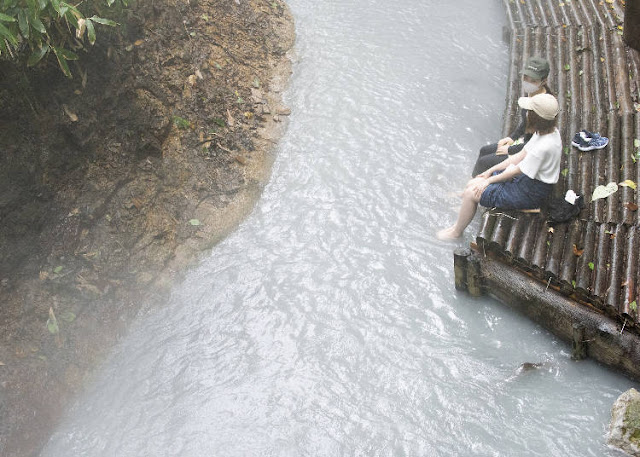 After enjoying a footbath, take Oyunuma Pathway No. 2 and return to the entrance at the service center. As you walk along, take note of the volcanic rocks that dot the promenade, which have been deposited by eruptions of the Kuttara volcano.
After enjoying a footbath, take Oyunuma Pathway No. 2 and return to the entrance at the service center. As you walk along, take note of the volcanic rocks that dot the promenade, which have been deposited by eruptions of the Kuttara volcano.
Seasonal highlights of Noboribetsu JigokudaniJigokudani's scenery is beautiful even in the fall and winter. In autumn, the surrounding mountains and forests turn red and create a gorgeous view. The Japanese rowans and their red leaves as a stand-out example of fall foliage.
In winter, steam rises from snowy Jigokudani in a powerful scene that looks as if the earth itself is earth is breathing the cold winter air.
*In winter, all boardwalks except Jigokudani Pathway will be closed due to snow.
Next, proceed along the "Oyunuma Pathway." The slope will gradually become steeper, so watch your step. Along the promenade, you'll see the Noboribetsu Primitive Forest, which is designated as a natural monument, where you can observe about 60 types of trees and about 110 types of alpine plants like azaleas and gaultheria. If you are lucky, you might even see deer and black woodpeckers.
After walking for about 20 minutes, you'll see Okunoyu and Oyunuma. Oyunuma is a gourd-shaped hot spring with a circumference of about 1 km, fed by a 130°C sulfur spring.
The white muddy river like this is called 'Nupurupetsu' ("white muddy river, deep-colored river") in the Ainu language, and it is said that it is the etymology of the name Noboribetsu," says Mr. Ishigami.

Jigokudani's scenery is beautiful even in the fall and winter. In autumn, the surrounding mountains and forests turn red and create a gorgeous view. The Japanese rowans and their red leaves as a stand-out example of fall foliage.
In winter, steam rises from snowy Jigokudani in a powerful scene that looks as if the earth itself is earth is breathing the cold winter air.
*In winter, all boardwalks except Jigokudani Pathway will be closed due to snow.
The taste of Noboribetsu at Onsen Ichiba

The most popular menu item is the "10-color Maehama Don," a luxurious dish with 10 kinds of seafood including shrimp and squid. (2,270 yen, tax included)

 |
| The most popular menu item is the "10-color Maehama Don," a luxurious dish with 10 kinds of seafood including shrimp and squid. (2,270 yen, tax included) |
 |
Noboribetsu's local specialty is called "Enma Yakisoba" (1,030 yen, tax included). It's available at about 30 restaurants around Noboribetsu, including Onsen Ichiba. "Enma," by the way, is the king of hell, who judges the sins of the dead.
ตั้งแต่เมื่อคืนหิมะตกทั้งคืน เราเลยเปลี่ยนแผนไปเที่ยวเมืองใกล้ๆสรุปว่าจะไปแก้ตัวที่โอตารุ อีกรอบ เช้านี้หิมะยังคงโปรยปราย รถไฟยังให้บริการไม่ได้หลายสายเพราะยังเคลียร์หิมะที่ตกเมื่อคืนยังไม่เรียบร้อย รวมถึงสายที่ไปโอตารุ ของเราด้วย นักท่องเที่ยวยังคงปักหลักเหนียวแน่นอยู่บนชานชาลา
ประมาณ1 ชั่วโมงทุกอย่างก็เรียบร้อย รถขบวนแรกเช้านี้จึงหนาแน่นเป็นพิเศษ เดินทางประมาณ 30 นาที ด้วยรถด่วนพิเศษสายที่ออกมาจากสนามบิน ปลายทางโอตารุ แต่วันนี้เราจะลงที่สถานี มินามิโอตารุและเดินชมเมืองและจะไปขึ้นรถไฟกลับที่สถานีโอตารุ
Otaru

Otaru Canal
The Pride of Otaru
ตอนบ่ายเราตกลงจะไปทานเนื้อย่างที่โรงเบียร์ซับโปโร
จบทริปสั้นๆที่เที่ยวด้วยตัวเอง
ช่วงต่อไปถึงคิวดูนก
ลองมาดูไฮไลท์ของที่นีกัน
エナガ
ここかと思うと、もうあちら
Shikotsu-Toya National Park
 |
| Dusky thrush |
 |
| Asian Rosy- fince |
The ice village
The Lake Shikotsu Ice Festival takes place each year from the end of January to the middle of February. It is based at Shikotsu Kohan on the eastern side of the lake. Sculptures and a wide range of structures are made by spraying water from the lake over frames. Once it gets dark, the event is lit up with colorful lights. Slip and slide around a rink or down an ice slide. Afterward, warm up in a nearby hotel hot spring.
Bird-Watching haven with beautiful lakeside strolls
Lake Utonai, located near the city of Tomakomai, is a hotspot for Bird-Watching. The 250-plus species of birds that live on its shores range from small breeds like Japanese tits to eastern marsh harriers and white-tailed eagles. Take a relaxed walk around the picturesque lake to spot birds, soak in the scenery, and enjoy the natural environment
北海道バードウォッチング
自然豊かな北海道で楽しんでみたいアクティビティの1つがバードウォッチング。ここでは、各地のバードウォッチングスポットを紹介します。北の大地にたくましく生きる野鳥たちから、元気とパワーをもらいましょう!美しい姿で知られるタンチョウは、日本で繁殖する唯一の野生ツル。漢字の「丹頂」の丹は「赤」、頂は「てっぺん」の意味で、頭のてっぺんが赤いことが由来です。アイヌ語では「サルルンカムイ(湿原の神)」と呼ばれる、北海道を代表する鳥であり、国内希少野生動植物種や特別天然記念物として保護されています。明治の半ばに絶滅したと考えられましたが、その後に生息が確認され、地元の給餌活動や国の保護事業によって生息数は年々増加傾向にあり、近年では1,000羽を超える数が観察されています。
(บทแทรก)
นกกระเรียนมงกุฎแดงมีชื่อเสียงในด้านรูปลักษณ์ที่สวยงามและเป็นนกกระเรียนป่าชนิดเดียวที่ผสมพันธุ์ในญี่ปุ่น คันจิ ``Tancho'' (ทันโจ) แปลว่า ``สีแดง'' และ ``ด้านบน'' และชื่อนี้มาจากการที่ส่วนบนของศีรษะเป็นสีแดง ในภาษาไอนุ เรียกว่า ``ซารุรุนคามุย'' (เทพเจ้าแห่งพื้นที่ชุ่มน้ำ) และเป็นตัวแทนของนกของฮอกไกโด และได้รับการคุ้มครองในฐานะสัตว์ป่าและพืชป่าสายพันธุ์หายากในประเทศ และเป็นอนุสรณ์สถานทางธรรมชาติที่พิเศษ เชื่อกันว่าพวกมันสูญพันธุ์ไปแล้วในช่วงกลางยุคเมจิ แต่นับตั้งแต่นั้นเป็นต้นมาก็ได้รับการยืนยันว่ามีอยู่จริง และด้วยความพยายามในการให้อาหารในท้องถิ่นและโครงการอนุรักษ์ระดับชาติ ทำให้จำนวนพวกมันเพิ่มขึ้นทุกปี และในช่วงไม่กี่ปีที่ผ่านมามีมากกว่า 1,000 ตัว ที่มีสำรวจนก
กิจกรรมหนึ่งที่คุณอยากทำในฮอกไกโดซึ่งอุดมไปด้วยธรรมชาติคือการดูนก เราจะมาแนะนำจุดดูนกทั่วประเทศกันค่ะ มารับพลังและพลังจากนกป่าที่อาศัยอยู่อย่างแข็งแกร่งในดินแดนทางเหนือกันเถอะ!北海道の鳥」に指定されているタンチョウを間近で見よう!
มาดูนกกระเรียนมงกุฎแดงที่ได้รับเลือกให้เป็นนกแห่งฮอกไกโดกันดีกว่า!
そんなタンチョウを観察するなら、タンチョウに関する日本で唯一の施設「阿寒国際ツルセンター グルス」と、隣接する「タンチョウ観察センター」がおすすめ。グルスの「野外飼育場」では、自然な状態に近いタンチョウの姿を1年中観察することができます。また、タンチョウ観察センターでは11月から3月にかけて人工給餌が行われ、多い時は300羽近い野生のタンチョウが集まることも。館内には軽食・喫茶コーナーがあり、暖かい室内からタンチョウの優雅な姿を眺めることができます。
バードウォッチングに最適!サンクチュアリ(野鳥の聖域)とは? เหมาะสำหรับการดูนก! สถานที่ศักดิ์สิทธิ์คืออะไร?
日本野鳥の会が設置する「サンクチュアリ」は、人と自然の出会いの場であり、地域の自然保護の拠点です。野鳥などの生息地の保全を主な目的としていますが、訪れた人々がそこの自然を直接体験する場所でもあります。森や林、草原、水辺には自然観察路があり、その季節の野鳥をはじめ多様な自然が楽しめます。サンクチュアリにはネイチャーセンターという拠点施設があり、レンジャーと呼ばれる専門の職員が、保全のための調査や自然環境の管理、自然体験の手助けなどの活動を行っています。
เขตรักษาพันธุ์สัตว์ป่าที่ก่อตั้งโดยสมาคมนกป่าแห่งประเทศญี่ปุ่นเป็นสถานที่ที่ผู้คนและธรรมชาติมาพบกัน และเป็นฐานสำหรับการอนุรักษ์ธรรมชาติในท้องถิ่น แม้ว่าจุดประสงค์หลักคือเพื่ออนุรักษ์ถิ่นที่อยู่ของนกป่า แต่ก็เป็นสถานที่ที่นักท่องเที่ยวสามารถสัมผัสธรรมชาติได้โดยตรง มีเส้นทางสังเกตธรรมชาติทั้งในป่า ป่าไม้ ทุ่งหญ้า และบริเวณริมน้ำที่คุณสามารถเพลิดเพลินกับธรรมชาติที่หลากหลาย รวมถึงนกป่าตามฤดูกาล เขตรักษาพันธุ์สัตว์ป่ามีสิ่งอำนวยความสะดวกพื้นฐานที่เรียกว่าศูนย์ธรรมชาติ โดยมีเจ้าหน้าที่ผู้เชี่ยวชาญที่เรียกว่าเจ้าหน้าที่พิทักษ์ป่าทำหน้าที่สำรวจการอนุรักษ์ จัดการสภาพแวดล้อมทางธรรมชาติ และช่วยเหลือเกี่ยวกับประสบการณ์ทางธรรมชาติ
会が自ら運営する2ヶ所のサンクチュアリは、どちらも北海道にあります。1981年に初めて設置された「ウトナイ湖サンクチュアリ」があるのは、苫小牧市のウトナイ湖。多くの渡り鳥が飛来するこの場所では、これまでに約270種の野鳥が確認されています。鶴居村にある「鶴居・伊藤タンチョウサンクチュアリ」では、絶滅危惧種であるタンチョウの増加や生息環境の保全に取り組んでいます。バードウォッチングはもちろん、野鳥についての知識や情報も得られるサンクチュアリ、ぜひ出かけてみては?
เขตรักษาพันธุ์สัตว์ป่าทั้งสองแห่งที่ดำเนินการโดยสมาคมตั้งอยู่ในฮอกไกโด เขตอนุรักษ์ทะเลสาบอุโทไน ก่อตั้งครั้งแรกในปี 1981 ตั้งอยู่ที่ทะเลสาบอุโทไนในเมืองโทมาโกไม จนถึงขณะนี้มีนกป่าประมาณ 270 สายพันธุ์ที่ได้รับการยืนยันแล้วในบริเวณนี้ซึ่งมีนกอพยพจำนวนมากเข้ามา ที่เขตรักษาพันธุ์นกกระเรียนมงกุฎแดงสึรุอิอิโตะในหมู่บ้านสึรุอิ เรากำลังดำเนินการเพื่อเพิ่มจำนวนนกกระเรียนมงกุฎแดง ซึ่งเป็นสัตว์ใกล้สูญพันธุ์ และเพื่อรักษาถิ่นที่อยู่ของพวกมัน ทำไมไม่ลองไปที่เขตรักษาพันธุ์สัตว์ป่าแห่งนี้ซึ่งไม่เพียงแต่จะได้ดูนกเท่านั้น แต่ยังได้รับความรู้และข้อมูลเกี่ยวกับนกป่าด้วย
渡り鳥や海鳥のダイナミックな習性を観察できる人気スポット
จุดยอดนิยมที่คุณสามารถสังเกตพฤติกรรมอันมีชีวิตชีวาของนกอพยพและนกทะเล
渡り鳥や繁殖する海鳥の習性が観察できるバードウォッチングスポットも人気です。まずご紹介するのが、美唄市の西端に位置する宮島沼。このラムサール条約登録湿地は世界でも有数のマガンの渡来地です。毎年春と秋にやってくるマガンは、その数なんと6万羽あまり。ここに滞在する間、マガンは朝早く宮島沼から飛び立って周辺の田んぼにエサをとりに出かけ、日没頃になるとねぐらの宮島沼に帰ってきます。数え切れないほどのマガンが一斉に飛び立つシーンはまさに感動的! マガンの群れと朝日や夕日とのコラボレーションが楽しめるのも魅力です
นอกจากนี้ที่นี่ยังเป็นจุดดูนกยอดนิยมที่คุณสามารถสังเกตนิสัยของนกทะเลอพยพและผสมพันธุ์ได้ สถานที่แรกที่เราอยากจะแนะนำให้คุณรู้จักคือ บึงมิยาจิมะ ซึ่งตั้งอยู่ทางขอบตะวันตกของเมืองบิไบ พื้นที่ชุ่มน้ำที่จดทะเบียนโดย Ramsar นี้เป็นหนึ่งในแหล่งอพยพชั้นนำของโลกสำหรับห่านหน้าขาว มีห่านหน้าขาวมากกว่า 60,000 ตัวที่มาทุกฤดูใบไม้ผลิและฤดูใบไม้ร่วง ในระหว่างที่พวกเขาอยู่ที่นี่ ห่านหน้าขาวจะบินออกจากบึงมิยาจิมะในตอนเช้าเพื่อหาอาหารในนาข้าวที่อยู่รอบๆ และกลับมายังจุดที่พวกมันอาศัยอยู่ที่บึงมิยาจิมะในช่วงพระอาทิตย์ตกดิน ฉากห่านหน้าขาวจำนวนนับไม่ถ้วนบินพร้อมกันนั้นช่างน่าประทับใจจริงๆ! สิ่งที่น่าสนใจอีกอย่างคือคุณสามารถเพลิดเพลินกับการทำงานร่วมกันระหว่างฝูงห่านหน้าขาวกับพระอาทิตย์ขึ้นและพระอาทิตย์ตก
北海道北部にある羽幌町の沖合に浮かぶ天売島は、8種類・約100万羽の海鳥が生息する「海鳥の楽園」です。地元ではオロロン鳥と呼ばれる、天売島のシンボル・ウミガラスは、絶滅危惧種として保護されており、天売島が日本で唯一の繁殖地です。海鳥の繁殖地の中心ポイントに設けられているのが海鳥観察舎。内部には無料で利用できる50倍の双眼鏡が設置され、ウミガラスをはじめ、ウミウの子育ての様子や、岩礁で遊ぶケイマフリなど、海鳥の自然な行動をじっくりと観察することができます。野生の厳しさと海鳥のたくましさを感じることうけあいです。
เกาะเทอุริซึ่งลอยอยู่นอกชายฝั่งเมืองฮาโบโรทางตอนเหนือของฮอกไกโด คือ ``สวรรค์ของนกทะเล'' ซึ่งเป็นที่อยู่ของนกทะเลประมาณ 1 ล้านตัวจาก 8 สายพันธุ์ สัญลักษณ์ของเกาะเทอุริ นกเมอร์เร หรือที่เรียกในท้องถิ่นว่านกโอโรรอน ได้รับการคุ้มครองเป็นสัตว์ใกล้สูญพันธุ์ และเกาะเทอุริเป็นแหล่งเพาะพันธุ์เพียงแห่งเดียวในญี่ปุ่น อาคารสังเกตนกทะเลตั้งอยู่บริเวณใจกลางพื้นที่เพาะพันธุ์นกทะเล ภายในมีกล้องส่องทางไกล 50x ที่สามารถใช้งานได้ฟรี ช่วยให้คุณสามารถสังเกตพฤติกรรมตามธรรมชาติของนกทะเลได้อย่างรอบคอบ รวมถึงนกนางนวล นกกาน้ำทะเลที่เลี้ยงลูก และปลาหินที่เล่นตามแนวปะการัง คุณจะสัมผัสได้ถึงความโหดร้ายของธรรมชาติและความแข็งแกร่งของนกทะเล
砕氷船に乗って流氷の上のオオワシ・オジロワシに会う
ขี่เรือตัดน้ำแข็งและพบกับนกอินทรีทะเล Steller และนกอินทรีหางขาวบนแผ่นน้ำแข็ง
最後は、期間限定のバードウォッチング体験をご紹介します。北海道のオホーツク海沿岸に、遠くシベリアから流氷が押し寄せてくるのは例年1月下旬のこと。知床半島にせき止められて流氷の密度が高くなる網走や紋別では、流氷を砕きながら海を進む「流氷砕氷船」が運行します。網走の「流氷観光砕氷船おーろら」は、流氷を船の重みで豪快に割って進むタイプで、紋別の「流氷砕氷船ガリンコ号」は、大きなドリルで流氷を砕いて突き進むタイプです。
あたり一面を埋め尽くす流氷も絶景ですが、厳しい寒さと共に生きる野鳥の姿が観察できるのもこの船の魅力です。流氷の上では、アザラシがごろんと寝転んでいたり、日本最大の猛禽類のオオワシやオジロワシが羽を休めている姿が見られることも。オレンジ色のくちばしが特徴のオオワシと、名前の通り白い尾羽が特徴のオジロワシは、流氷の時期の渡り鳥です。厳寒期の独特な世界の中で野生のたくましさに触れると、生きる活力が湧いてくるような気がします。
เราจะแนะนำประสบการณ์การดูนกแบบจำกัดเวลา โดยปกติจะเป็นช่วงปลายเดือนมกราคมที่น้ำแข็งลอยมาจากที่ไกลออกไปเมื่อไซบีเรียเคลื่อนตัวเข้าสู่ชายฝั่งทะเลโอค็อตสค์ในฮอกไกโด ในอะบาชิริและมอมเบตสึ ซึ่งมีความหนาแน่นของธารน้ำแข็งสูงเนื่องจากการถูกเขื่อนกั้นโดยคาบสมุทรชิเระโทโกะ "เรือตัดน้ำแข็งแบบดริฟท์" จะทำงานในขณะที่พวกมันเคลื่อนตัวในทะเลไปพร้อมๆ กับการสลายน้ำแข็งที่ลอยอยู่ เรือตัดน้ำแข็ง ``เรือตัดน้ำแข็งล่องลอย Aurora'' ของอะบาชิริใช้น้ำหนักของเรือเพื่อทะลวงผ่านน้ำแข็งแบบไดนามิก ในขณะที่ ``เรือตัดน้ำแข็งล่องลอย Garinko'' ของมอนเบตสึใช้สว่านขนาดใหญ่เพื่อเจาะน้ำแข็ง
ไฮไลท์ประมาณนี้ต่อไปเราจะเริ่มเจอประสพการณ์จริงกัน
วันที่4 01/02/25
มื้อเช้าส่งท้าย สาวๆก็ยังคงจัดเต็มเหมือนเดิม
ขอชื่นชมและแนะนำที่นี่เลยสำหรับใครที่จะมาซับโปโร
เจี๊ยบแววพันธ์ได้พรรณนาไว้อย่างน่าฟังว่า “เข้าวันเสาร์ ผู้คน👫👬🧑🤝🧑เข้าออก sapporo Station บางตา ถนนตามรถ🚗🚙🚐🚚🚗นานๆถึงจะวิ่งมา คงเป็นเช้าวันหยุดที่อยู่ในบ้าน🏫🏨สบายกว่า ส่วนพวกเรา เริ่มโปรแกรมดูนก 🐦🐦⬛🦜🦉🕊️ทั้งหมด 7วัน นัดไกด์ไว้ 8.30น 🕣 เดินทางโดยรถตู้ ”
8.30ไกด์ต้นเขียวมารับที่โรงแรมเพื่อเดินทางไปเมืองTomakomai ระยะทางประมาณ 60ใช้เวลานั่งรถแค่1 ชั่วโมง
ได้เวลาดูนก อยู่ซับโปโร ผจญหิมะ มาครบ 3 วัน วันนี้เราออกเดินทางไปเมือง Tamakomai ทางใต้ของฮอกไกโด เพื่อออกดูนกวันแรก แวะชมทะเลสาปShikotsu ไกด์ต้นเขียวบอกว่าฤดูใบไม้เปลี่ยนสีที่นี่สวยมากๆ มีกิจกรรมให้เล่นเยอะแยะ
นกชุดแรกที่ต้อนรับอยู่ในสระน้ำหน้าอุทยานคือ Golden eye ตัวเมียและฝูงเป็ด Mallard ตัวผู้หัวสีม่วงเหลือบฟ้าเขียวสดใส ตัวเมียสีเป็ด
 |
นกเปลือกไม้ Hume's Treecreeper |
 |
| นกไต่ไม้ Eurasian nuthatch |
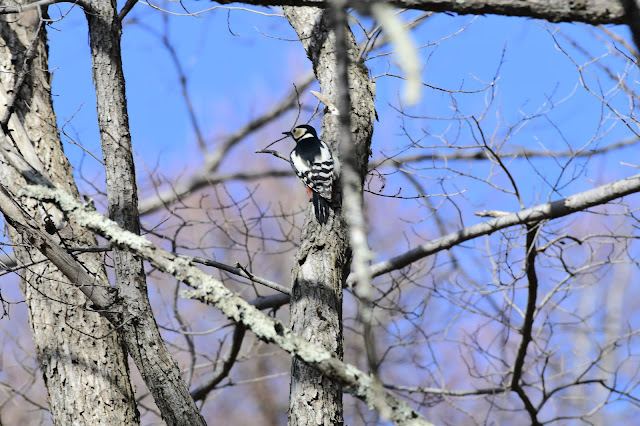 |
| White-backed woodpecker |

เราวกกลับมาเกินอีกฟากของลำธาร
Common Goldeneye
ขณะที่เรากำลังโฟกัสกับ Golden Eye ก็มี wave ของ ติ๊ดเข้ามา เราดีใจมากที่เป็น Long-tailed Tit ตัวท้อปของฮอกไกโด คนดูนกชาวญี่ปุ่นตื่นเต้นกันใหญ่ ที่นี่มีต้นไม้ไม่สูงนักซึ่งออกลูกเต็มต้น ติ๊ด 3-4 ตัวบินวนมามาจิกกินช่วงสั้น หลายรอบ
Tit หางยาวในฮอกไกโดคือ Aegithalos caudatus japonicus ซึ่งเป็นสายพันธุ์ย่อยของTit หางยาวที่พบในเกาะฮอนชู Long tailed Tit ฮอกไกโดไม่มีขนคิ้วสีดำหนา ต่างจากTitบนแผ่นดินใหญ่ ใบหน้าจึงดูขาวทั้งหมด
Eurasian Wren
ด้วยใบหน้าที่ขาวราวกับก้อนหิมะ จงอยปากเล็ก ดวงตากลม และเปลือกตาสีเหลือง ติ๊ดหางยาวของฮอกไกโดจึงถูกเรียกว่า "นางฟ้าหิมะ" เพราะว่าพวกมันดูน่ารักมาก ได้รับความนิยมอย่างมากเมื่อมีการนำเสนอในแอนิเมชั่นญี่ปุ่น (อะนิเมะ) และการ์ตูน (มังงะ) และสินค้าของที่ระลึกมากมาย สามารถพบเห็นพวกมันได้ตลอดทั้งปีในฮอกไกโด แต่ในช่วงฤดูหนาว พวกมันจะพองขนเพื่อให้ร่างกายอบอุ่น ช่างภาพนกป่าหลายคนตั้งเป้าที่จะถ่ายภาพนกเหล่านี้ให้มีรูปร่างทรงกลมที่น่ารัก
コゲラまたはコゲラ(Yungipicus kikki) は、キツツキの一種です。ロシア、中国、韓国、日本の針葉樹林と落葉樹林で見られます。この種はデンドロコポス属またはピコイデス属にも分類されています。国際自然保護連合 (IUCN) は、この種を最も懸念のない種として評価しています。
Japanese pygmy woodpecker
Noboribetsu Jigokudani (Hell Valley)
登別地獄谷
หลังจากแผนแรกที่จะมาที่นี่พลาดไปเพราะในวันที่3 ของทริปหิมะถล่มหนักตอนกลางคืนทำให้รถไฟขบวนเช้าหยุดให้บริการชั่วคราวหลายเส้นทาง จนเราต้องยกเลิกที่จะมาที่นี่
วันนี้เรามาถึงที่นี่ หิมะเริ่มโปรยปรายเบาๆเหมือนจะบรรเทาหุบเขานรกให้เข้าใกล้ใกล้สวรรค์มากขึ้น
Hokkaido – the Jewel of Winter Birding
วันนี้เราจะไปดูนกทางภาคตะวันออกของฮอกไกโด
ไป Kushiro
ก่อนออกจากเมือง Tamakomai เราแวะที่พาร์คอีกครั้ง สภาพแวดล้อมที่พาร์คเช้านนี้ดูแตกต่างจากสองวันก่อนราวกับเป็นคนละที่กันด้วยหิมะที่ปกคลุมพื้นที่ขาวโพลน 100%
วันที่7 04/02/25
ที่ Kushiroหิมะถล่มตั้งแต่เมื่อคืนลมแรง เช้านี้ ประกาศ ปิดรร. และสถานที่ราชการเราจะได้ไปต่อหรือไม่
เช้านี้หิมะยังคกตกอยู่ เรามีแผนจะไปชมนกกระเรียน แต่ต้องลุ้นว่าจะไปถึงเป้าหมายหรือไม่หน้าโรงแรม Smile Hotel เจ้าหน้าที่กำลังใช้อุปกรณ์หนักเคลียร์หิมะบนถนน ตลอดเส้นทางที่เราจะไปชม
ตามเส้นทางถนนค่อนข้างโล่งอาจเป็นเพราะประกาศให้เป็นวันหยุด นานจะเห็นรถสวนทางมาสักคัน ทุกครั้งที่เจอเราจะรู้ใจชื่นที่เข้าใจได้ว่าถนนข้างน่าหิมะไม่หนาเกินที่จะทำให้รถจมหิมะ ยิ่งได้เจอรถกวาดหิมะอยู่ใกล้ๆจะยิ่งเบาใจ
ในที่สุดเราก็มาถึงสะพาน Otawa อันเลื่องชื่อของคนที่รักการชมกระเรียน ซึ่งในเวลานี้ปกติที่นี่จะคราครำ่ไปด้วยนักท่องเที่ยวที่มารอถ่ายภาพนกกระเรียนบินขึ้นจากแม่น้ำที่เป็นรังนอนของพวกเขา แต่วันนี้ไร้วี่แววของทั้งคนและนก
ถ่ายรูปพวกเรากันเองไว้เป็นที่ระลึกว่าครั้งหนึ่งที่ที่สะพานนี้ปลอดคน หลังจากนั้นก็เดินทางไปที่ศูนย์ อนุรักษ์นกกระเรียน ก็ต้องลุ้นเช่นเดิมว่าหิมะลงเช่นนี้นกจะลงไหม
ที่ลานนกกระเรียนน่าแปลกใจที่มีนักท่องเที่ยวมารอกระเรียนอยู่มากพอสมควรและทะยอยมาเรื่อยๆจนเวลาประมาณ 9โมงนกก็มา นักท่องเที่ยวก็เต็มบริเวณขอบรั้วเหมือนเคย
การfeed อาหารก็ยังคงทำตามปกติท่ามกลางสายหิมะ
ไปส่องดูตามรังที่นกเคยอยู่แต่วันนี้หิมะนกหนาเกินไปนกคงหลบอยู่ในโพรงไม่ออกมาให้เห็น ก็คงต้องกลับมาอีกครั้งในวันที่อากาศดีกว่านี้
เรากลับถึงโรงแรมประมาณบ่าย3โมงหิมะหยุดตกแล้ว ท้องฟ้าเริ่มมีแสงแดดส่องลงมาถึงพื้น เรายังมีเวลาเลยพากันเดินไปที่แม่น้ำ้ใกล้ๆโรงแรมอีกครั้ง
ที่แม่น้ำเราเห็นฝูงเป็ดอยู่แถวๆสะพานไกลออกไปประมาณ2 ช่วงถนนจึงหาทางลัดเลาะไปตามชายฝั่งจนได้เห็นตัวใกล้สมใจ
Common pochard
Tufted duck
วันที่8 05/02/25
เช้ามืด 6.00 am เรามาที่สะพาน Ottawa อีกครั้งเพื่อถ่ายนกกระเรียนออกหากินและเต้นรำ
เช้านี้เราได้ดื่มด่ำกับทิวทัศน์สายน้ำเซทซูริจากสะพานออตโทวะแสงสีทองที่ทาบอยู่บนพื้นปุยหิมะ ไอหมอกที่ลอยอยู่เหนือสายน้ำเสมือนไออุ่น ที่ปลายสายน้ำฝูงนกกระเรียนกลุ่มหนึ่ง อ้อยอิ่งอยู่ในสายหมอกเสมือนกำลังแช่ออนเซ็นดูเปี่ยมสุข
It is a very rare vagrant to Europe, but like several related Asiatic rosefinches, is reasonably frequent in the cage bird trade, so many records have been considered to relate to escapes.
Long-tailed Rosefinch
The red color of the male shines in the river bed
Origin of Benimashiko name
"Beni" in Benimashiko simply refers to the crimson one. "Mashiko" is written as "monkey" in kanji and refers to a monkey with a red face. The name emphasizes the red color that stands out among the bushes.
Tsurui-Ito Tancho SanctuaryStanding Tall and Red: Wild, Red-Crowned Crane
Season of love for dancing Japanese cranes
They dance gracefully on the snowy field, confirming their love for one another. At a "tancho" observation spot next to Akan International Crane Center in Kushiro, two Japanese cranes -- a protected species -- perform courtship dances.
Dance is used to strengthen the bond between the elegant-looking birds, also known as red-crowned cranes, before breeding.
When one bird spreads its wings and leaps gracefully, the other bird moves in harmony.
The dance can often be observed when the weather is warmer than usual during the winter months and, this year, many pairs started this ritual from the middle of February, when temperatures rose.
"There are a large number of cranes before and after feeding at 8:30 a.m. so activities such as dancing become lively," said Miyuki Kawase, head of the observation center.
The dance can be observed until next month when the cranes return from the feeding ground to the wetlands.
Juveniles are a combination of white, partly tawny, cinnamon brown, and rusty or grayish. The neck collar is grayish to coffee brown, the secondaries are dull black and brown, and the crown and forehead are covered with gray and tawny feathers. The primaries are white, tipped with black, as are the upper primary coverts. The legs and bill are similar to those of adults but lighter in color.
White-naped crane
เรารีบจบการดูนกกระเรียนเพื่อไปลุ้น Owl กันต่อจากที่เมื่อวานไม่มีร่องรอยของการเคลื่อนไหวของนกที่ปากโพรง
Ezo Ural owls are usually found in the trees they’ve chosen for their fixed nest sites, but they may change their location from year to year. We speculate that this may be due to changes—precipitated by the amount of snowfall in a given year—in their rodent-hunting spots. In the month of February, at the nests we observe every year, we can see the owls stand side by side in pairs—for them, this is courtship season. In some nests, we could not see the pair line up together, perhaps because one of the two had disappeared.
| In Sapporo, these birds can be seen in Maruyama Park, Nakajima Park and Nopporo Forest Park and many other parks. Some birds can be found not only in the forests but also in residential areas. Keep your ears open to listen for bird tweets, and try to find them. |
บ่ายโมงเดินทางไป Kotan Hotspring
Kotan Onsen
Kotan Hot Springs
Kussharo lake, which lies in Teshikaga town is the largest caldera lake of Japan. There is a river hot spring nearby with high acidity, which also mixes with the lake. In winter, the lake gets frozen, but due to the hot spring, a part of lake is not frozen. A lot of Swans gather at this not part which is a famous place to observe / Photograph the Swans. In summer, there are a lot of visitors in the ”sand hot spring” which has become a summer camping place. If the sand is dug with stone, there you find hot water. The peninsula around the lake is a beautiful drive route, where you can enjoy beautiful landscape while driving.
Cr. A textbook winter trip in Hokkaido – Japan by Dev
Whooper Swans at Lake Kussharo
Like the Chinese say “Green Head Duck”

Whooper swan
Mallard
The mallard or wild duck is a dabbling duck that breeds throughout the temperate and subtropical Americas, Eurasia, and North Africa. It has been introduced to New Zealand, Australia, Peru, Brazil, Uruguay, Argentina, Chile, Colombia, the Falkland Islands, and South Africa.
Kushiro, Hokkaido in winter. Beautiful Japanese cranes with dignity in cold, warm up your body with special hot spring and attractive nature views of Kushiro are only available in winter.
 |
| Tree sparrow |
 |
| Dusky Thrush |
เดินทาง 2.30 ชั่วโมงไปเมือง Rausu ระหว่างทางเจอสุนัขจิ้งจอก
Sakhalin fox
The Ezo red fox (Vulpes vulpes schrencki) is a subspecies of red fox widely distributed in Hokkaido, Sakhalin, the Kuril Islands and the surrounding islands of Japan. The Ezo red fox's formal name, kitakitsune (北狐), was given to the subspecies by Kyukichi Kishida when he studied them in Sakhalin in 1924.
北海道赤狐
The Ezo red fox is somewhat larger than the Japanese red fox (V. v. japonica) found in Honshu, Shikoku and Kyushu, and the outer part of the ear and the limbs are black. There are many similarities with continental red foxes

วันที่8 05/02/25
วันนี้เราจะไปล่องเรือฝ่าลมหนาว
Rausu, ฮอกไกโด โชว์แรกของน้ำแข็งและดวงอาทิตย์, และบทเพลงของน้ำแข็งและไฟของคาบสมุทรชิเระโตะโกะ!
| ฉากท้องทะเลที่มี ลูกไฟสีแดงขนาดมหึมาที่ค่อยๆ เคลื่อนตัวขึ้นช้าๆ แสงของไฟสีแดงอาบท้องฟ้า สะท้อนลงบนพื้นผิวทะเลแวววาวสีแดง ธรรมชาติและมหาสมุทรที่ ถูกแช่แข็งอินทรีย์ใต้แสงอาทิตย์ โบยบินได้อย่างอิสระ นี่คือฉากม่านการเดินทางอันยาวนานที่ฉันไม่เคยเห็นมาก่อน
|
チャールストンワシ Charleston eagle Chārusutonwashi Charleston eagle |
อินทรีทะเลชเตลเลอร์ และอินทรีทะเลหางขาว มาแล้วครับ นกอินทรีหลายร้อยตัวมาที่ราอุสุเพื่อใช้เวลาช่วงฤดูหนาว และถูกกำหนดให้เป็นสัตว์ใกล้สูญพันธุ์และเป็นอนุสรณ์ทางธรรมชาติ เมื่อฤดูน้ำแข็งเริ่มมาเยือนอย่างจริงจัง จำนวนนักท่องเที่ยวก็จะเพิ่มมากขึ้น การอยู่ร่วมกันของธารน้ำแข็ง นกอินทรีทะเลสเตลเลอร์ และนกอินทรีหางขาว และพระอาทิตย์ยามเช้าที่ขึ้นเหนือเกาะ Kunashir เป็นภาพที่สามารถพบได้ที่นี่ใน Rausu เท่านั้น Rausu ยังเป็นสถานที่ที่คุณสามารถมองเห็นสิงโตทะเลและแมวน้ำได้
Rausu🇯🇵 羅臼町 เมืองน่ารักๆอยู่ด้านตะวันออกสุดของฮอกไกโด ที่นี่ บ้านเรือน ร้านรวง รถราล้วนเป็นสีพาสเทล เมื่อถูกปกคลุมด้วยหิมะ ยิ่งดูละมุนตา เรามาที่นี่เพื่อชม นกอินทรีทะเลสเตลเลอร์ และนกอินทรีหางขาวที่อพยพมาอยู่ที่ราอุสุช่วงหน้าหนาว และก็ไม่ผิดหวังได้ชมอย่างจุใจทั้งในทะเลและ บนฝั่ง คืนแรกเราพักที่ Bear Elephant ซึ่งเจ้าของเป็นคนไทย และมีน้องคนไทยเป็นคนดูแล 1คน ใครมาแถวนี้แนะนำให้มาช่วยอุดหนุนกันนะครับ🇯🇵
Hokkaido's Notsuke Peninsula in Winter
A nature lover's paradise
 |
| by Nantawan |

ทางเดินขอบฟ้าเยือกแข็งแห่ง Notsuke Peninsula
If you're a nature lover, this place is for you. There are some amazing bird watching opportunities - we saw massive hawks and eagles basically as soon as we arrived. The surrounding bay freezes over in winter, and you'll see deer and foxes out on the ice - it's otherworldly. One of the most unique experiences though was getting to do an ice walk ourselves, and the subsequent photos that we took while out there!
Because the ice is so vast and so flat, it creates the perfect venue for some optical illusion styled photographs. We had a bunch of props including a small mug and a mikan orange, which we set up to take pictures with. If you get the angles right, you can take photos that make you look like you're standing inside a mug, or balancing on the mikan. Honestly, there are probably a whole host of other great photos you could take - the only real limitation is your imagination, but it was definitely a bit of fun!
 |
| Snow buntting |
หากคุณเป็นคนรักธรรมชาติ สถานที่แห่งนี้เหมาะสำหรับคุณ มีโอกาสดูนกที่น่าทึ่งอีกด้วย โดยพื้นฐานแล้วเราเห็นเหยี่ยวและนกอินทรีขนาดใหญ่ทันทีที่เรามาถึง อ่าวที่อยู่รอบๆ กลายเป็นน้ำแข็งในฤดูหนาว และคุณจะเห็นกวางและสุนัขจิ้งจอกอยู่บนน้ำแข็ง ซึ่งดูราวกับอยู่นอกโลก ประสบการณ์ที่ไม่เหมือนใครที่สุดอย่างหนึ่งคือการได้เดินบนน้ำแข็งด้วยตัวเอง และรูปถ่ายต่อมาที่เราถ่ายขณะออกไปที่นั่น! |
| Red Fox |
The unique Hokkaido nature: Yezo sika deer
The island of Hokkaido was for a long time both culturally and biogeographically separated from Japan’s main island Honshu. Nowadays Japanese culture has spread to Hokkaido and the culture of Ainu – the indigenous people of North Japan and Russia – has in many ways been lost from the everyday lives of the locals. Still, when it comes to the local flora and fauna, the island is in many ways unique from other parts of Japan.
Between the island of Hokkaido and Japan’s main island Honshu, there is a biogeographical border named Blakiston’s Line. One of the species that can only be found north from the line is Yezo sika deer – also known as Ezo shika deer or Hokkaido deer. “Ezo land”, literally “the land of barbarians” or “the land of foreigners” was used by Japanese when they referred to the areas north of Japan (present day main island Honshu). After the Meiji Restoration (1868), the island was re-named as “Hokkaido”, but the history is still visible in names of species indigenous to the island. Yezo sika deer is one such exampl
 |
Eurasian Wigeonเราเดินทางมาจนสุดปลายแหลมที่อนุญาตให้เราเข้าได้ แวะชมทัศณียภาพที่นี่และเผื่อจะมีโอกาสได้เจอ snow bunting มีรถของนักดูนกมาจอดอยู่2-3 คัน คงมาด้วยจุดหมายเดียวกันกับเรา ไกด์ต้นเขียวลองออกเดินสำรวจ อยู่นานพอสมควรแต่ก็ไม่มีสัญญาณใดๆ จึงกลับไปขับรถเลียบทะเลเพื่อส่องดูไปเรื่อยๆ |
ริมถนนเราได้เจอ bunting ตัวหนึ่งชนคาดว่าจะเป็น Rustic buntinต่อมาไกด์เห็นฝูง rose fince บินเลียบชายหาดจึงขับรถตามไปเรื่อยๆในที่สุดก ฝูงนกก็ลงบริเวณพื้นที่ทีกำลังก่อสร้าง เราได้เห็นเพียงไกลๆ
Rustic bunting
This bird is similar in size to a reed bunting. It has white underparts with reddish flank, pink legs and a pink lower mandible. The summer male has a black head with a white throat and supercilium and a reddish breast band.
The female has a heavily streaked brown back and brown face with a whitish supercilium. She resembles a female reed bunting, but has the reddish flank streaks, a chestnut nape and a pink, not grey, lower mandible.
Asian rosy finch
ก่อนกลับเราแวะศูนย์บริการนักท่องเที่ยวซึ่งเป็นอาคาร 2 ชั้น ชั้นบนเป็นส่วนแสดงนิทรรศการการศึกษาธรรมชาติในพื้นที่ Notsuke penisular ชั้นล่างจะเป็นภัตาคารและร้านจำหน่ายของที่ระลึก
 The great crested grebe is the largest species of grebe in the Old World, though some larger species occur in the Americas. They measure 46–51 cm (18–20 in) long with a 59–73 cm (23–29 in) wingspan and weigh 0.9 to 1.5 kg (2.0 to 3.3 lb).It is an excellent swimmer and diver, and pursues its fish prey underwater. The adults are unmistakable in summer with head and neck decorations. In winter, this is whiter than most grebes, with white above the eye, and a pink bill. Birds resident in warmer tropical and subtropical regions (particularly in subspecies P. c. infuscatus and P. c. australis) such as Kenya and parts of Australia retain breeding plumage all or almost all of the year, with reduced or no winter plumage
The great crested grebe is the largest species of grebe in the Old World, though some larger species occur in the Americas. They measure 46–51 cm (18–20 in) long with a 59–73 cm (23–29 in) wingspan and weigh 0.9 to 1.5 kg (2.0 to 3.3 lb).It is an excellent swimmer and diver, and pursues its fish prey underwater. The adults are unmistakable in summer with head and neck decorations. In winter, this is whiter than most grebes, with white above the eye, and a pink bill. Birds resident in warmer tropical and subtropical regions (particularly in subspecies P. c. infuscatus and P. c. australis) such as Kenya and parts of Australia retain breeding plumage all or almost all of the year, with reduced or no winter plumage
ที่เมือง Rausu บนเกาะ Hokkaido ของญี่ปุ่น เราใช้บริการสถานที่ดูนก/ที่พักที่ Washi no Yado (鷲の宿) ซึ่งมีลักษณะเป็น Minshuku หรือ B&B แบบญี่ปุ่น ที่นี่น่าจะเรียกได้ว่าเป็นที่ที่สามารถดูนกล่าเหยื่อขนาดใหญ่ที่ใกล้สูญพันธุ์ของโลกชนิดนี้ได้ง่ายดายที่สุดแล้วในญี่ปุ่น และก็เป็นที่รู้จักกันมายาวนานสำหรับนักดูนกญี่ปุ่นและนักดูนกต่างชาติ เพราะอะไรจะสบายขนาดดูนกได้จากห้องนอน!
ถ้าคิดจะมาที่นี่ก็ต้องติดต่อเจ้าของสถานที่จองที่นั่งใน Observation Cabin (3,000 เยน) หรือจะเข้าพักที่นี่ก็ได้ โดยค่าที่พักจะรวมอาหารเย็นและอาหารเช้าด้วย (9,000 เยน) ราคา ณ ปี 2018 อย่างไรก็ดี ถ้าจะพักที่นี่ ที่ดีที่สุดคือได้ห้องติดด้านลำห้วยที่นกมาลง เพราะสามารถดูนกจากห้องตัวเองได้เลย ถ้าได้ห้องอื่นที่มองไม่เห็นลำห้วย ก็ต้องไปนั่งดูใน Observation Cabin แทน ซึ่งทั้งนี้ทั้งนั้นอยู่ที่จำนวนคนเข้าพักและใครมาก่อนมาหลัง อย่างฉันเข้าไปพักคนเดียว ก็เลยได้ห้องด้านในที่มองไม่เห็นลำห้วย เป็นห้องหกเสื่อเล็กๆ มีเครื่องทำความร้อน ที่นอน โทรทัศน์ (ซึ่งฉันไม่ได้ใช้) ห้องน้ำเป็นห้องน้ำรวมด้านนอก มีห้องอาบน้ำแยกออกไปอีก บ้านมีสองชั้น และมีอีกอาคารหนึ่งแยกออกไปต่างหาก (ซึ่งไม่เห็นนกเช่นเดียวกัน)
 |
| จุดดูนกอีกจุดวันนี้งดใช้ |
 |
| ที่ลานบ่อนกติดไฟสปอตไลท์ที่แสงไม่รบกวนนก |
 |
| บ่อนกที่ใส่ปลาแซมมอลตัวเป็นๆไว้เพื่อเลี้ยงนก |
 |
| บริเวณบ่อเมื่อเปิดไฟสปอตไลท์ |
คืนนี้รอบค่ำนกไม่มา ไกด์ต้นเขียวที่ไม่ได้พักกับเราที่นี่ส่งข้อความมาถามเป็นระยะๆด้วยความเป็นห่วงจนถึงเที่ยงคืนนกยังไม่มาก็เลยต้องล้มตัวลงนอนหลับเอาแรงตั้งนาฬิกาปลุกไว้ตี2
World’s biggest owl
Blakiston’s Fish Owl (Rausu)
The Blakiston’s fish owl can be seen from a facility along the Chitorai River in Rausu. It is a very rare species that inhabits only eastern Hokkaido and Far East Russia (Kunashir Island).
จบโชว์
Sapporo Snow Festival
รางวัลชนะเลิศเป็นของประทศมองโกเลีย ไทยเสียแชมป์ที่เคยครองมา4 สมัย คนญี่ปุ่นค่อนข้างให้ความสนใจ ของไทยเป็นพิเศษ คิวถ่ายรูปแน่น และได้ยินเสียง สโก้ะๆ จากแทบทุกคน
Bye Sapporo
หลังจากเช็คอินโรงแรมใกล้สนามบิน ที่เมือง Chitose เดินไปทานปิ้งย่างแถวโรงแรมเริ่มเข้าบรรยากาสอาหารไทยๆ
Main Bird-watching Spots in Hokkaido
Onuma Bird House (Wakkanai)
This log house is most suitable for observing waterfowl by Onuma Pond where several thousand swans fly in during the spring and autumn. There is a rental service for binoculars and telescopes.
Maruyama Park (Sapporo)
This large park is very popular with Sapporo citizens. Primeval forests of Mizunara (oak) and Katsura trees spread out over the hills.
Lake Utonai-ko Sanctuary (Tomakomai)
The Wild Bird Society of Japan manages this sanctuary where you can see more than 170 kinds of birds including swans and white-tailed sea eagles throughout the year. Ezo shika deer and Ezo red fox can also be seen here. On the bird-watching tours, rangers are available to provide information such as when the geese land in large numbers in March.
Akan International Crane Center (Kushiro)
"Grus" is the Latin word for crane. The GRUS research facility situated in Akan is a famous habitat for the red-crowned crane. In the outdoor breeding farm, you can observe wild cranes and enjoy learning about the ecology of them.
Mudflats at Mu-kawa Estuary (Mukawa Town, Yubutsu)
Mu-kawa River is 136 km in length and is the 5th longest river in Hokkaido. The estuary is well known among birdwatchers as a stopover spot for migratory birds such as curlews and plovers. Activities for the preservation of the estuary are promoted.
Shunkunitai Wild Bird Sanctuary (Nemuro)
Shunkunitai is a sandbank that lies between the Sea of Okhotsk and Lake Furen- ko. The main feature of this area is the diversity of nature that includes seashore, grass fields, wetlands and mudflats, where you might encounter not only wild birds but also various animals such as Ezo red fox, Ezo shika deer and seals. Rangers of "Wild Bird Society of Japan" are present at all times, and events such as Steller's sea eagle watch tours in winter are held on weekends.
Notsuke-hanto Peninsula Nature Center (Betsukai Town, Notsuke)
Red-crowned cranes can be seen here from early spring till late autumn. In the winter, you might see white-tailed sea eagles and Steller's sea eagles together, which is in itself a precious experience. From May to October, bird watching or forest walk nature tours are offered as a set with a cruise on a sightseeing boat. You need to book these tours in advance.
Nopporo Forest Park Visitor's Center (Sapporo, Ebetsu, Kita-hiroshima)
This vast hillside forest is home to birds such as the black woodpecker and rare animals including the Ezo salamander and Ezo brown frog, despite its close proximity to urban Sapporo. There are wonderful nature trails here, ranging from 1 to 5 km long, so depending on how much time you have, choose the best one for an enjoyable walk.
The Visitor's Center includes a facility that introduces the history of Hokkaido's development. You will learn about the local people and their struggle to coexist with the harshness of nature. There is a 100-m-tall monument equipped with an observatory, the "Historical Museum of Hokkaido" and the "Historical Village of Hokkaido".

















